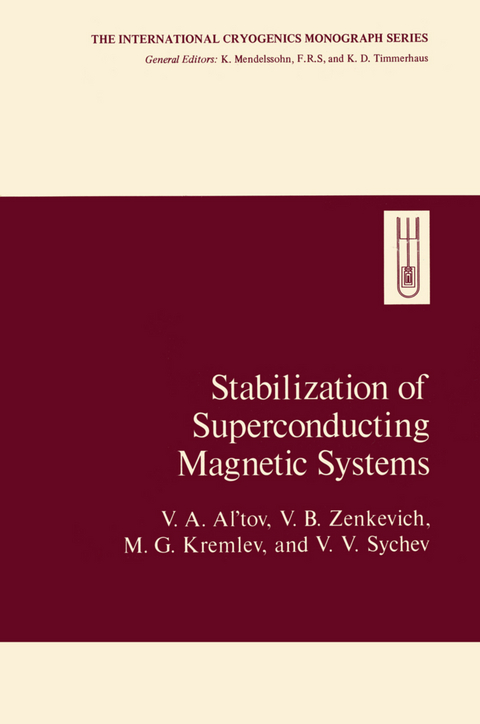
Stabilization of Superconducting Magnetic Systems
Springer-Verlag New York Inc.
978-1-4613-4117-8 (ISBN)
I Superconductivity and Its Applications.- 1. The future of superconductivity in modern technology.- 2. The nature of superconductivity.- 3. Protection of superconducting magnetic systems.- II Method of Thermal Stabilization.- 4. Equilibrium of the normal zone in combined conductors under isothermal conditions.- 5. Equilibrium of the normal zone in combined conductors in the presence of a longitudinal temperature gradient.- 6. Propagation of the normal zone in a superconducting coil.- 7. Combined conductors with forced cooling.- 8. Equilibrium and propagation of the normal zone in a close-packed superconducting coil.- III Combined Conductors with Internal Stabilization.- 9. Stability of superconductors of the second kind with respect to flux jumps.- 10. Multiple-core straight conductors.- 11. Twisted and coiled combined conductors.- Appendix: Dimensionless volt—ampere characteristics of combined conductors.- References.
| Erscheint lt. Verlag | 26.11.2012 |
|---|---|
| Reihe/Serie | Exlog Series of Petroleum Geology and Engineering Handbooks |
| Zusatzinfo | XIV, 338 p. |
| Verlagsort | New York, NY |
| Sprache | englisch |
| Maße | 155 x 235 mm |
| Themenwelt | Schulbuch / Wörterbuch |
| Geisteswissenschaften | |
| Mathematik / Informatik ► Informatik ► Theorie / Studium | |
| Naturwissenschaften | |
| Sozialwissenschaften | |
| Technik ► Elektrotechnik / Energietechnik | |
| ISBN-10 | 1-4613-4117-5 / 1461341175 |
| ISBN-13 | 978-1-4613-4117-8 / 9781461341178 |
| Zustand | Neuware |
| Haben Sie eine Frage zum Produkt? |
aus dem Bereich


